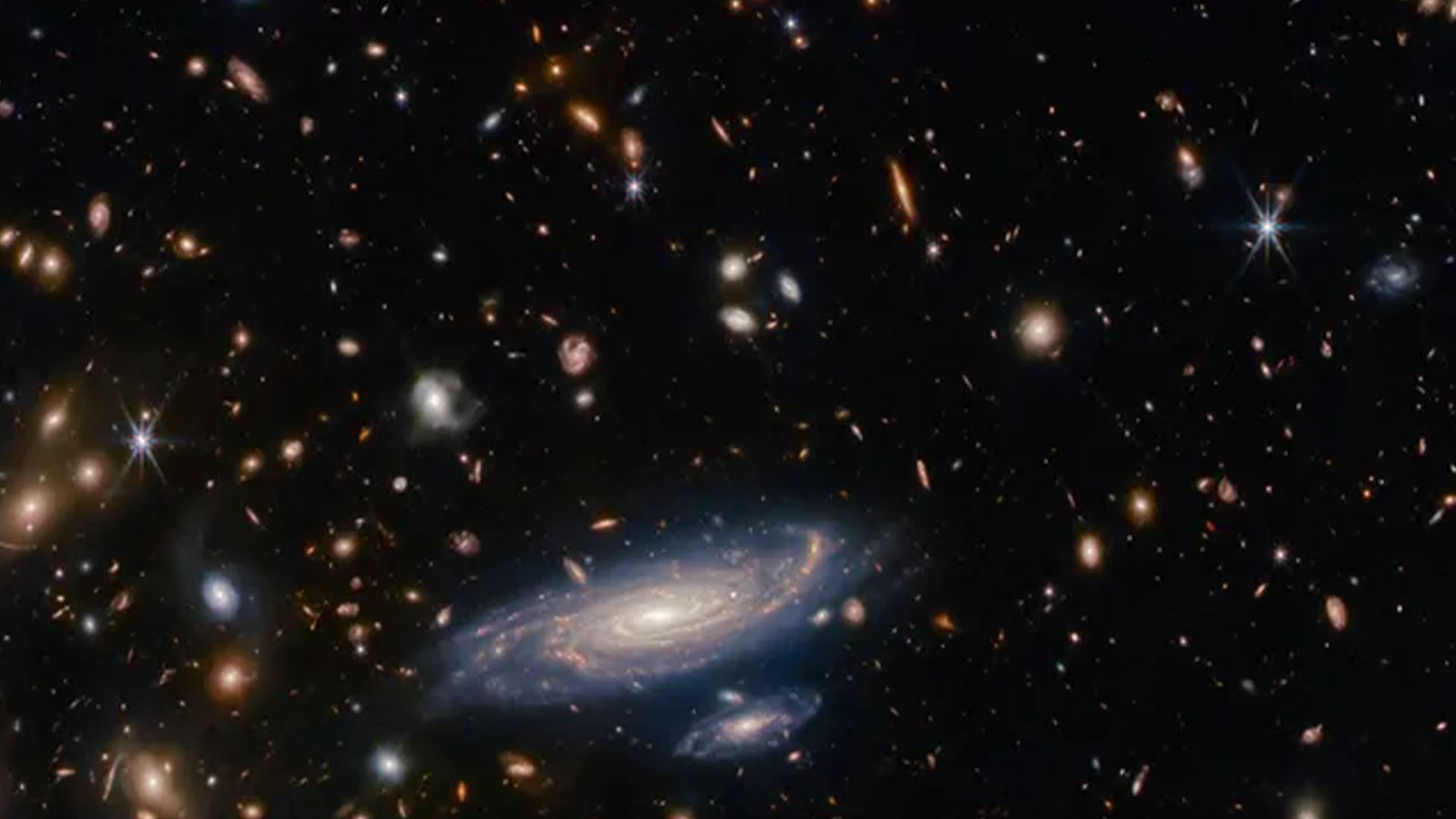
The James Webb Space Telescope (JWST) has spotted a strange “inside-out” galaxy at the beginning of the universe.
The galaxy, named JADES-GS+53.18343−27.79097, existed just 700 million years after the Big Bang and is roughly 100 times smaller than the Milky Way. Yet, unlike most galaxies, its growth seems to have occurred inside-out — with stars forming more rapidly on the outskirts than inside its dense core.
Theoretical models have predicted that such inside-out galaxies should be common across the early universe, but scientists previously lacked the ability to peer through the dust and gas that obscured them from view. Now, thanks to JWST, the researchers have confirmed their predictions by glimpsing the earliest one ever seen. They published their findings Oct. 11 in the journal Nature Astronomy.
"One of the many reasons that Webb is so transformational to us as astronomers is that we're now able to observe what had previously been predicted through modeling," study co-author William Baker, a graduate student at the University of Cambridge, said in a statement. "It's like being able to check your homework."
Galaxies in our local universe grow in two main ways: by capturing enough gas to form new stars, or by merging with smaller galaxies. But whether these are the only mechanisms, or if others may have existed at earlier stages in the universe, remains unclear.
Related: Group of 60 ultra-faint stars orbiting the Milky Way could be new type of galaxy never seen before
"The question of how galaxies evolve over cosmic time is an important one in astrophysics," co-lead author Sandro Tacchella, a professor of astrophysics at the University of Cambridge, said in the statement. "We've had lots of excellent data for the last 10 million years and for galaxies in our corner of the universe, but now with Webb, we can get observational data from billions of years back in time, probing the first billion years of cosmic history, which opens up all kinds of new questions."
To investigate this question, the researchers looked through data on ancient galaxies collected during the JWST's JADES (JWST Advanced Deep Extragalactic Survey) survey. Light travels at a fixed speed through the vacuum of space, so the deeper JWST looks into the universe, the more remote light it intercepts and the further back in time it, effectively, enables astronomers to see.
Poring over these observations revealed the new galaxy to the astronomers. By analyzing the light coming from the stars within it using JWST's Near-Infrared Spectrograph (NIRSpec) instrument, the researchers were able to figure out the stars’ ages.
They found that the galaxy has a very dense core, and is surrounded by a disc of gas and dust whose stars are undergoing rapid formation — causing the galaxy to double in size once every 10 million years, compared to the Milky Way's 10-billion-year doubling rate. Once these stars have taken shape, they slowly migrate to the core and cause the galaxy to spin faster, like an ice skater pulling their arms closer into their body, the researchers said.
With the galaxy found, the researchers say they will now look for others like it.
"Of course, this is only one galaxy, so we need to know what other galaxies at the time were doing," Tacchella said. "Were all galaxies like this one? We're now analyzing similar data from other galaxies. By looking at different galaxies across cosmic time, we may be able to reconstruct the growth cycle and demonstrate how galaxies grow to their eventual size today."







